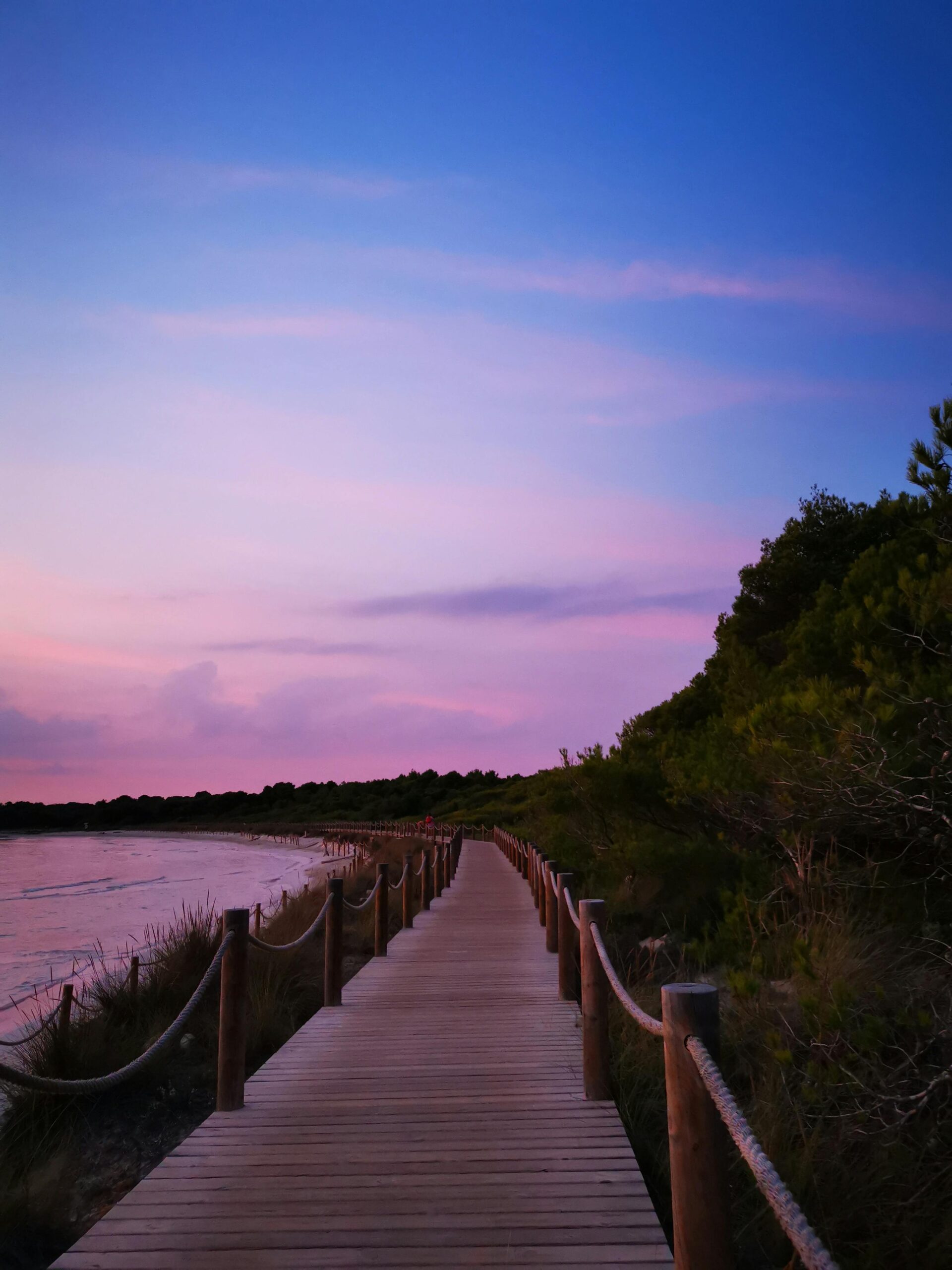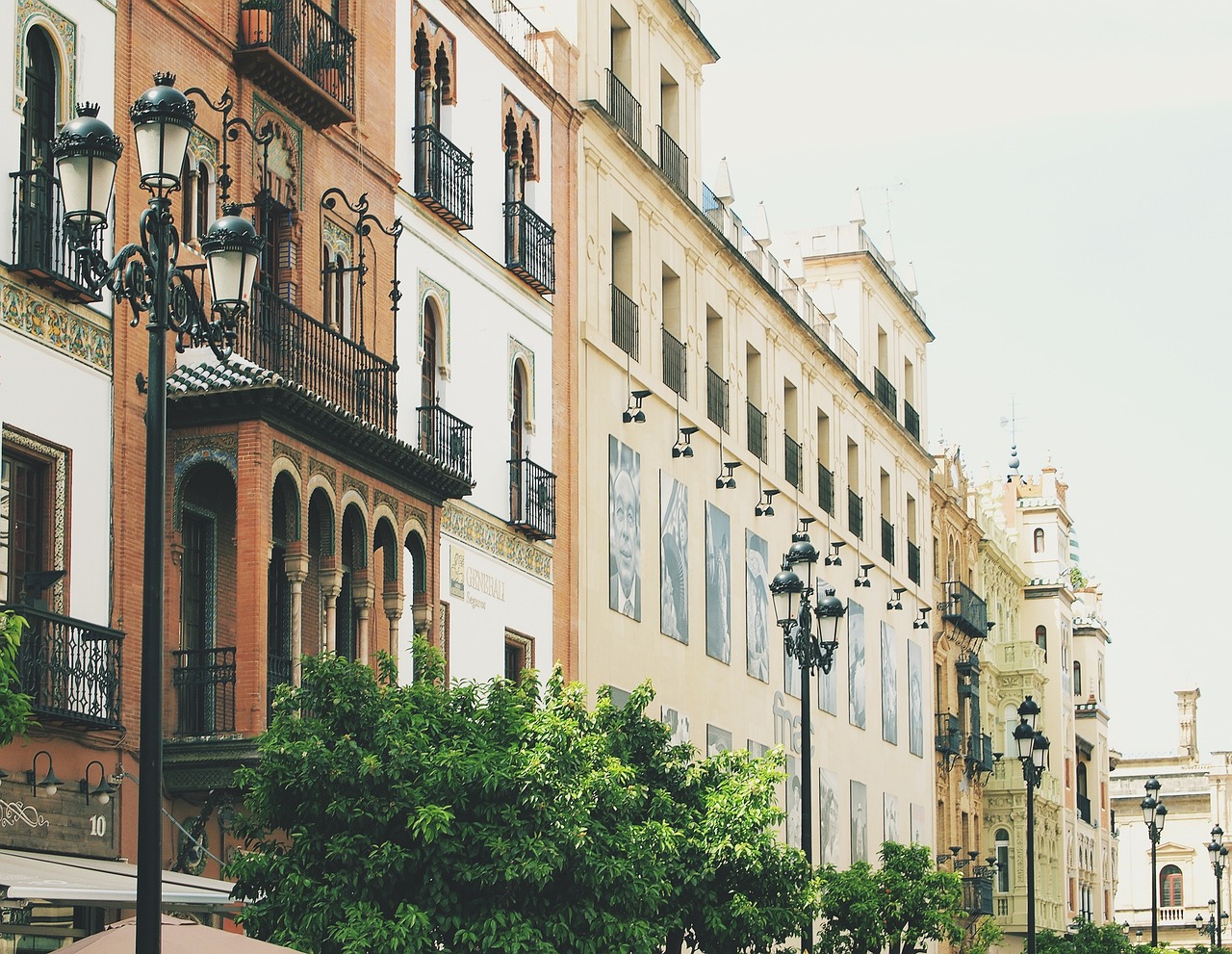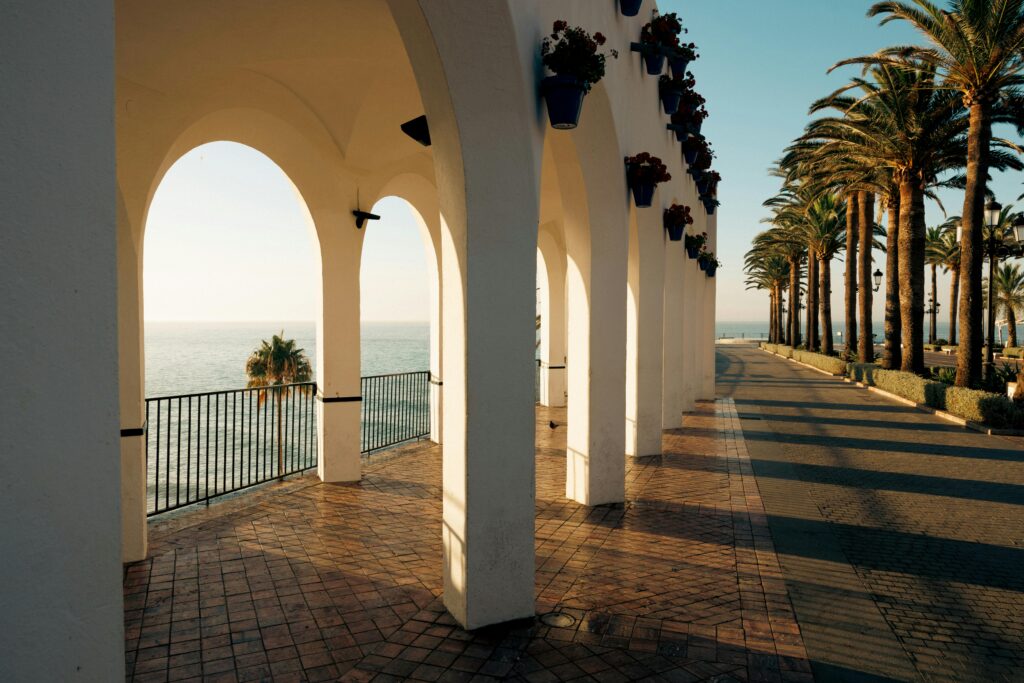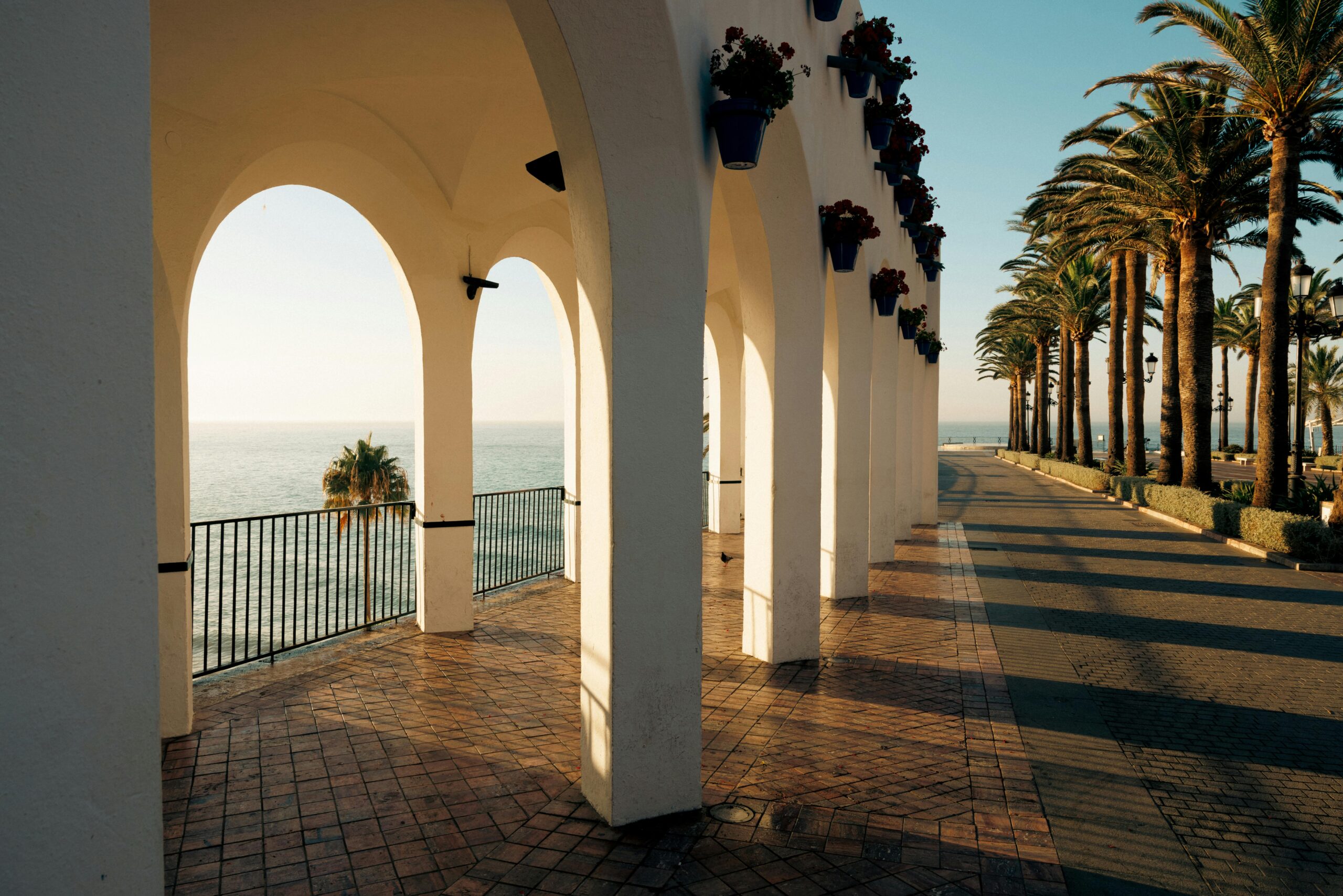
Uncovering Granada’s Arabic Baths: A Historical Experience
- Granada
- septiembre 6, 2024
Hanna Smith
Writer & Blogger
Granada, a city with a rich tapestry of cultures, offers visitors the chance to step back in time and experience the ancient traditions of the Moors who once ruled the region. Among the many cultural legacies left by the Moors, the Arabic baths, or hammams, stand out as a particularly luxurious and relaxing way to connect with the past. These baths were not only places of cleansing and relaxation but also social hubs where people gathered to talk, meditate, and rejuvenate. Today, Granada’s Arabic baths offer a tranquil escape where you can immerse yourself in history and enjoy a unique spa experience. Here’s a guide to uncovering the best Arabic baths in Granada.
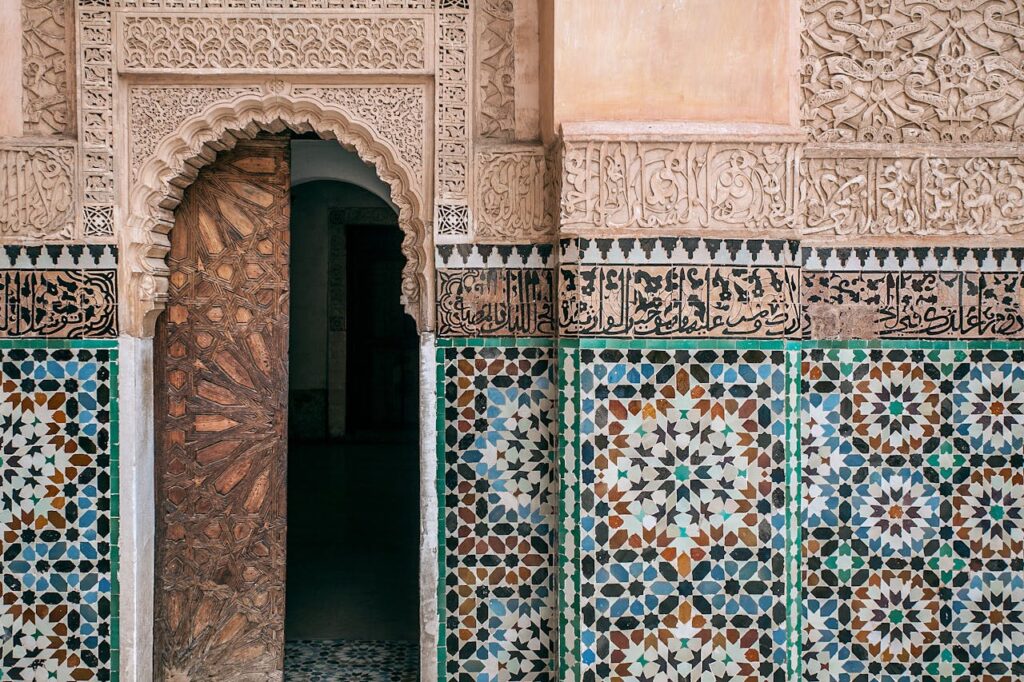
Hammam Al Ándalus
One of the most famous and beautifully restored Arabic baths in Granada is Hammam Al Ándalus. Located near the foot of the Alhambra, this luxurious hammam recreates the ambiance of the original baths that once dotted the city during the Nasrid dynasty. The interior of Hammam Al Ándalus is an architectural marvel, with its stunning arches, intricate tilework, and soft lighting that transports you back to the days of Moorish Granada.
Visitors can enjoy a range of bathing experiences in various pools of differing temperatures, from the warm tepidarium to the hot caldarium and the cold frigidarium. The baths also feature a steam room and a relaxation area where you can sip mint tea. For a truly indulgent experience, consider booking a traditional kessa (exfoliation) massage or a relaxing aromatherapy massage, which uses essential oils to enhance your sense of well-being. Hammam Al Ándalus offers a serene and historical escape from the hustle and bustle of modern life, making it a must-visit for anyone seeking relaxation and a connection to Granada’s Moorish past.
Aljibe de San Miguel
Another excellent option for experiencing Arabic baths in Granada is the Aljibe de San Miguel, located in the Realejo district. This hammam offers a more intimate and authentic experience, with its smaller size and focus on traditional bathing rituals. The Aljibe de San Miguel is housed in a historic building that has been carefully restored to reflect the original design of Granada’s ancient baths, complete with vaulted ceilings, star-shaped skylights, and warm, inviting tones.
At Aljibe de San Miguel, guests can enjoy a series of thermal baths with varying temperatures, as well as a steam room and relaxation area. The baths are infused with natural scents like lavender, rose, and jasmine, adding to the calming atmosphere. The hammam also offers a range of treatments, including traditional Turkish scrubs and soothing massages. The quiet and peaceful environment at Aljibe de San Miguel makes it an ideal place to unwind and experience the time-honored traditions of Granada’s Moorish culture.
El Bañuelo
For those interested in exploring the historical roots of Granada’s Arabic baths, a visit to El Bañuelo is a must. Located along the Carrera del Darro, this ancient bathhouse dates back to the 11th century and is one of the few remaining public baths from the Moorish period that has survived intact. While El Bañuelo no longer functions as a bathhouse, it has been carefully preserved as a historical site and is open to the public.
Visitors to El Bañuelo can explore the original bath chambers, which include the cold room, warm room, and hot room—each featuring beautiful horseshoe arches and intricately decorated ceilings. The bathhouse provides a fascinating glimpse into the daily life of Granada’s Moorish residents, who would have come here to bathe, socialize, and relax. A visit to El Bañuelo is a journey back in time, offering a unique perspective on the cultural heritage of Andalusia.
Baños Árabes de Elvira
Nestled in the heart of the Albayzín, Granada’s historic Moorish quarter, the Baños Árabes de Elvira offers a truly authentic Arabic bath experience. This hammam is known for its traditional design and intimate atmosphere, making it a favorite among both locals and visitors looking for a more off-the-beaten-path experience. The baths are set in a beautifully restored building that reflects the Moorish architectural style, with arched doorways, mosaic tiles, and soothing water features.
At Baños Árabes de Elvira, you can enjoy the soothing waters of the thermal baths, which range from hot to cold, as well as a steam room and a tranquil relaxation area. The hammam also offers a variety of treatments, including Moroccan-style exfoliation and deep-tissue massages. The Baños Árabes de Elvira is an ideal spot for those looking to escape the crowds and immerse themselves in the rich traditions of Granada’s Moorish past.
Hammam Al Ándalus Albaicín
For a more modern take on the traditional Arabic baths, Hammam Al Ándalus Albaicín provides a luxurious and contemporary spa experience in the heart of Granada’s Albayzín district. This hammam combines the ancient traditions of the Moorish baths with modern amenities, creating a perfect balance of history and comfort. The design of the hammam is inspired by the Andalusian palaces, with its elegant décor, soothing ambiance, and use of natural materials like stone and wood.
The baths at Hammam Al Ándalus Albaicín include a series of thermal pools, a steam room, and a relaxation area where you can enjoy herbal teas and fresh fruit. The hammam also offers a variety of wellness treatments, such as deep relaxation massages, essential oil therapies, and traditional scrubs. With its luxurious setting and wide range of services, Hammam Al Ándalus Albaicín is an excellent choice for those looking to experience the best of both worlds—traditional Moorish culture and modern spa luxury.
Tips for Visiting Granada’s Arabic Baths
- Book in Advance: Arabic baths in Granada are popular, so it’s a good idea to book your visit in advance to secure your preferred time slot.
- Arrive Early: Arriving a few minutes before your scheduled time allows you to fully relax and enjoy the experience without feeling rushed.
- Bring Swimwear: Most hammams require guests to wear swimwear, so be sure to bring your own. Towels are usually provided.
- Relax and Unwind: The baths are designed to be a place of relaxation, so take your time, move slowly between the different pools, and allow yourself to fully unwind.
Conclusion
Granada’s Arabic baths offer a unique and immersive way to connect with the city’s rich Moorish heritage. Whether you’re seeking a luxurious spa experience at Hammam Al Ándalus, exploring the historical significance of El Bañuelo, or enjoying the intimate ambiance of Aljibe de San Miguel, each bath provides a tranquil escape and a journey back in time. So take a break from the bustling streets of Granada and indulge in the ancient traditions of the hammam for a truly unforgettable experience.
Recent Posts
- All Posts
- Alicante
- Barcelona
- Beaches
- Bilbao
- Castles
- Cordoba
- Culture
- Day Trips
- Family
- Gastronomy
- Granada
- Hidden Gems
- Ibiza
- Madrid
- Mallorca
- Menorca
- Nature
- Nightlife
- Oviedo
- Seville
- Shopping
- Toledo
- Travel
- Valencia
- Zaragoza

Are you traveling with children?
Take some ideas of plans so you can enjoy the trip as a family. Ideal for everyone!
Category
- Alicante (15)
- Barcelona (15)
- Beaches (11)
- Bilbao (15)
- Castles (2)
- Cordoba (14)
- Culture (59)
- Day Trips (8)
- Family (13)
- Gastronomy (51)
- Granada (15)
- Hidden Gems (15)
- Ibiza (16)
- Madrid (15)
- Mallorca (5)
- Menorca (16)
- Nature (4)
- Nightlife (8)
- Oviedo (15)
- Seville (17)
- Shopping (6)
- Toledo (14)
- Travel (1)
- Valencia (16)
- Zaragoza (13)
Tags
- Adventure (3)
- ARt (5)
- Brunch (1)
- Churchs (5)
- Coffee (2)
- Day Trips (2)
- Festivals (2)
- Flamenco (3)
- Garden (1)
- Hidden Gems (10)
- Hiking (1)
- Historical (18)
- Market (4)
- Museums (2)
- Music (2)
- Nerja (1)
- Parks (3)
- Patios (3)
- Pintxos (2)
- Relax (1)
- Rooftops (3)
- Seafood (3)
- Snorkel (1)
- Spring (1)
- Tapas (8)
- Traditional (1)
- Trail (3)
- Trip (2)
- Viewpoints (2)
- Walking (4)
- Weekend (1)
- Wine (1)
- Winter (1)
Top 10 Best Christmas Markets in Spain: Festive Guide 2024 Travel noviembre 19, 2024 Olivia Jones Writer & Blogger Spain, with its rich cultural heritage and festive spirit, transforms into a winter wonderland during the holiday season. From bustling urban centers to quaint historic towns, the country hosts a plethora of Christmas markets that captivate both locals and visitors. These markets, known as «mercados de Navidad,» offer a unique blend of traditional crafts, delectable treats, and vibrant entertainment, making them a must-visit during the festive period. 1. Plaza Mayor Christmas Market, Madrid Madrid’s Plaza Mayor, a historic square dating back to the 17th century, becomes the heart of the city’s Christmas celebrations. From late November to December 31st, the square is adorned with over 100 stalls offering a variety of items, from handcrafted ornaments to traditional nativity scene figures. The market is renowned for its festive atmosphere, with twinkling lights illuminating the square and street performers entertaining the crowds. Visitors can indulge in seasonal delicacies such as «turrón» (nougat) and «polvorones» (almond cookies), making it a delightful experience for all ages. Destinos Europeos Excepcionales 2. Fira de Santa Llúcia, Barcelona Established in 1786, the Fira de Santa Llúcia is Barcelona’s oldest and most iconic Christmas market. Located in front of the majestic Barcelona Cathedral, the market features over 280 stalls selling a wide array of products, including handcrafted gifts, decorations, and traditional Catalan items. A unique aspect of this market is the «caganer,» a traditional Catalan figurine often included in nativity scenes. The market also hosts various activities, such as workshops and musical performances, providing a comprehensive festive experience. España 3. Mercado de Navidad de Plaza del Pilar, Zaragoza Zaragoza’s Plaza del Pilar transforms into a festive hub from early December to early January. The market boasts a large ice-skating rink, a nativity scene with live animals, and numerous stalls offering artisanal crafts and local gastronomy. The backdrop of the Basilica del Pilar adds to the enchanting atmosphere, making it a picturesque destination for holiday festivities. Sensational Spain 4. Mercado de Navidad de la Plaza del Ayuntamiento, Valencia Valencia’s central square hosts a charming Christmas market featuring stalls with handcrafted goods, festive decorations, and local delicacies. The market is known for its lively ambiance, with street musicians and performers adding to the festive spirit. Visitors can also enjoy the beautifully decorated Christmas tree and the traditional nativity scene displayed in the square. Sensational Spain 5. Feria del Belén, Seville Seville’s Feria del Belén is a specialized market dedicated to nativity scenes. Located near the Cathedral, the market offers a vast selection of handcrafted nativity figures and accessories, reflecting the city’s deep-rooted Christmas traditions. It’s an ideal place for collectors and those looking to add a unique touch to their holiday decorations. Sensational Spain 6. Mercado de Navidad de la Plaza Mayor, Salamanca Salamanca’s historic Plaza Mayor hosts a delightful Christmas market featuring stalls with artisanal crafts, festive foods, and holiday decorations. The square’s stunning architecture, illuminated with festive lights, provides a magical setting for the market. Visitors can enjoy traditional Spanish Christmas treats and find unique gifts while soaking in the festive atmosphere. Sensational Spain 7. Mercado de Navidad de la Plaza de la Constitución, Málaga Málaga’s Plaza de la Constitución becomes a focal point of Christmas celebrations, hosting a market with stalls offering a variety of products, from crafts to culinary delights. The city’s famous Christmas lights, especially along Calle Larios, are a major attraction, drawing visitors from all over to witness the spectacular displays. Sensational Spain 8. Mercado de Navidad de la Plaza Mayor, León León’s Plaza Mayor transforms into a festive market during the holiday season, featuring stalls with local crafts, food, and Christmas decorations. The market is known for its warm and welcoming atmosphere, with the historic square providing a beautiful backdrop for the festivities. Visitors can enjoy traditional music performances and sample regional specialties, making it a memorable experience. Sensational Spain 9. Mercado de Navidad de la Plaza del Príncipe, Vigo Vigo’s Plaza del Príncipe hosts a vibrant Christmas market known for its lively atmosphere and diverse offerings. Stalls feature a range of products, including handmade crafts, festive foods, and unique gifts. The city’s impressive Christmas light displays, which have gained international recognition, add to the market’s appeal, creating a magical setting for holiday shoppers. Sensational Spain 10. Mercado de Navidad de la Plaza Mayor, Burgos Burgos’s Plaza Mayor becomes a hub of Christmas activity, with a market offering a variety of goods, from artisanal crafts to local delicacies. The market is set against the backdrop of the city’s historic architecture, with festive lights illuminating the square. Visitors can explore the stalls, enjoy traditional music, and experience the warm hospitality of the locals during the holiday season. Sensational Spain Tips for Visiting Spanish Christmas Markets Timing: Most markets open in late November and run until early January. It’s advisable to check specific dates in advance, as they can vary each year. Local Specialties: Each region offers unique products and delicacies. For instance, Barcelona is known for its «caganer» figurines, while Madrid offers a variety of nativity scene figures. Cultural Etiquette: Engaging with local vendors and participating in traditional activities can enhance the experience. Learning a few basic Spanish phrases can also be beneficial. Weather Preparedness: While Spain generally has a mild winter, temperatures can drop in the evenings. Dressing in Recent Categories You may also like: Edit Template
Authentic Flamenco Shows in Córdoba: Where to Experience the Best Uncategorized septiembre 14, 2024 Hanna Smith Writer & Blogger Edit Template Córdoba, a city steeped in history and culture, is one of the best places in Spain to experience the passionate art of flamenco. While Seville is often seen as the heart of flamenco, Córdoba has its own rich tradition and offers a more intimate and authentic flamenco experience. From small, cozy tablaos to larger venues, here’s a guide to the best places in Córdoba to witness this captivating performance of dance, song, and music. Córdoba Edit Template 1. Tablao El Cardenal One of the most famous venues in Córdoba, Tablao El Cardenal offers nightly flamenco performances featuring some of the region’s most talented dancers, singers, and guitarists. Located in the heart of the city, near the Mezquita, the venue has a traditional Andalusian courtyard setting that adds to the charm of the experience. The performances here are dynamic, showcasing the fiery energy and emotion that make flamenco so unique. Why It’s Special: The venue is steeped in history, set in an old 16th-century building. Performances feature a variety of flamenco styles, including bulerías, tangos, and fandangos. The intimate setting allows for a closer connection to the performers, making it a deeply moving experience. Tips: Book your tickets in advance, as performances often sell out, especially during peak tourist seasons. Arrive early to get a good seat and enjoy the beautiful surroundings of the courtyard. 2. Arte y Sabores de Córdoba For a unique combination of flamenco and local cuisine, Arte y Sabores de Córdoba offers an experience that combines Andalusian gastronomy with an authentic flamenco performance. The venue is located inside the Arab Baths of Santa María, adding an extra layer of historic ambiance to your evening. You can enjoy a selection of traditional tapas and wines while watching a mesmerizing flamenco show. Why It’s Special: The setting in the former Arab Baths creates a unique and historic atmosphere. Enjoy the local flavors of Córdoba with dishes like salmorejo and jamón ibérico as part of your evening. Performances feature both traditional and modern flamenco, showcasing a range of styles and expressions. Tips: Make a reservation for both the show and the meal to ensure you have the full experience. Try the local wines that are offered as part of the dinner package for an authentic taste of Córdoba. 3. Peña Flamenca Fosforito For those looking for a more local and traditional experience, Peña Flamenca Fosforito is a flamenco social club where locals gather to celebrate the art of flamenco. Named after Antonio Fernández Díaz “Fosforito”, a legendary flamenco singer from Córdoba, this venue offers a more informal and intimate setting where you can witness flamenco performances that are deeply rooted in the community. Why It’s Special: The performances here are raw and authentic, often featuring local talent. It’s a great place to experience cante jondo, the deepest and most expressive style of flamenco singing. The atmosphere is friendly and welcoming, offering a true taste of Córdoba’s flamenco culture. Tips: Peña Flamenca Fosforito often hosts special events and festivals, so check the schedule in advance for unique performances. This venue is less touristy than others, making it a great option for those looking for a more authentic, local experience. 4. La Bulería La Bulería is a popular flamenco bar in Córdoba where you can experience live flamenco performances in a lively and intimate setting. Known for its vibrant atmosphere, La Bulería attracts both locals and visitors, making it a fantastic place to immerse yourself in the passionate energy of flamenco. The small size of the venue ensures that every seat offers a great view of the performers. Why It’s Special: The venue’s small size creates an up-close experience with the performers. The lively and energetic atmosphere makes it a great spot for a night out with friends or family. It’s a more casual and relaxed environment compared to larger tablaos, offering a fun and spontaneous flamenco experience. Tips: Shows start late in the evening, so plan accordingly for a true flamenco night out. Arrive early to secure a good spot, as seating is limited. 5. La Casa de la Memoria If you’re looking for a deeper understanding of flamenco’s roots and history, a visit to La Casa de la Memoria is a must. While not exclusively a flamenco venue, this cultural center in Córdoba often hosts flamenco shows alongside exhibitions and events that delve into the history of this iconic Andalusian art form. It’s a great place to learn more about the evolution of flamenco while also enjoying a top-notch performance. Why It’s Special: The focus on cultural preservation adds a meaningful dimension to the flamenco performances. The venue regularly hosts lectures and workshops on flamenco, making it ideal for those looking to learn more about the art form. The intimate performances often feature both established and up-and-coming flamenco artists. Tips: Check their event schedule in advance, as performances are not held every night. Consider attending one of the workshops or lectures to gain deeper insight into flamenco culture. Conclusion Córdoba offers a wide range of venues where you can experience authentic flamenco performances, from historic tablaos to local social clubs. Whether you’re looking for a vibrant night out or a more intimate, traditional experience, Córdoba’s flamenco scene will captivate you with its passion and artistry. So grab a seat, tap your feet, and let the soulful sounds of flamenco transport you into the heart of Andalusian culture. Recent Categories You may also like: Edit Template


